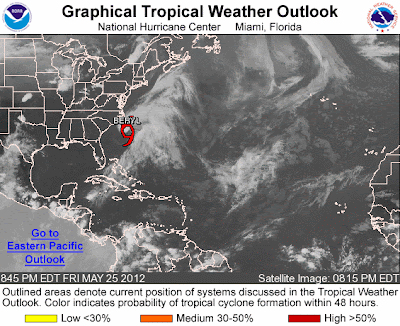Beryl has not performed as anticipated with regard to the forecast track overnight. The model tracks in my opinion, are a little aggressive with the northeast turn of Beryl. Getting into the analysis this morning outside the storm I think the system will head further west before making the turn on Wednesday. It may even dip southwestward and emerge over the northern Gulf of Mexico this afternoon before a trough from the west finally moves the ridge to the north out of the way. Looking at the 300 hPa analysis it is obvious that the upper level winds are out of the north just outside the storm.
 |
| Storm Prediction Center Analysis |
 |
| Storm Prediction Center Analysis |
 |
| Storm Prediction Center Analysis |
If Beryl taps into the moisture from the Gulf of Mexico the rainfall estimates may be slightly underdone, and the storm may go through a brief period of minimal intensification before the trough impacts the track and puts Beryl back on the forecast Wednesday. It is highly unlikely that Beryl will be anything more than a TS with winds more than we are finding this morning. Beryl is impressive in that the circulation is in tact and the deep layer organization is holding together over land. The western edge of the storm appears to be weaker only due to the radar depiction. With the Tallahassee radar out of service, we can look at the Moody radar and see that there clearly is more reflectivity showing on the western edge of the circulation. (below)
Be ready and be prepared and go to your local National Weather Service Office web site for Hurricane Local Statements, watches and warnings; http://www.weather.gov/. The weather.gov web site is a clickable site which you can click on your location and it will take you to your local office. Go to the National Weather Service National Hurricane Center web site for the only authority and only official hurricane forecasts and advisories http://www.nhc.noaa.gov/
Cheers,
BC



















